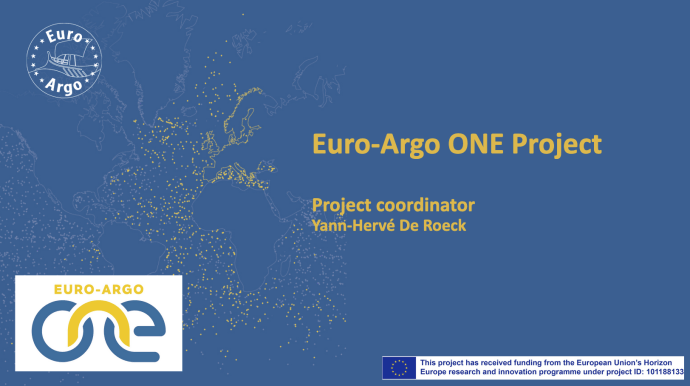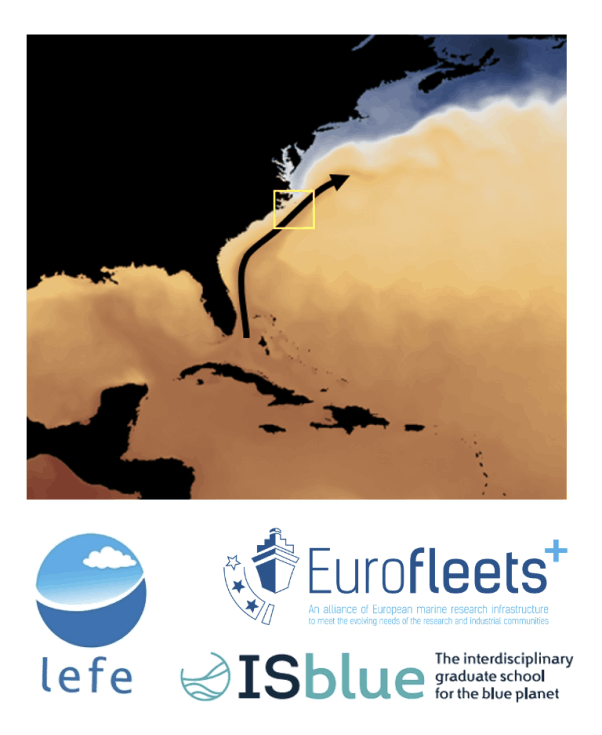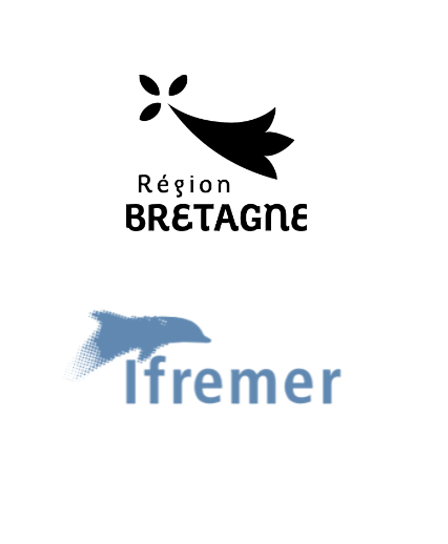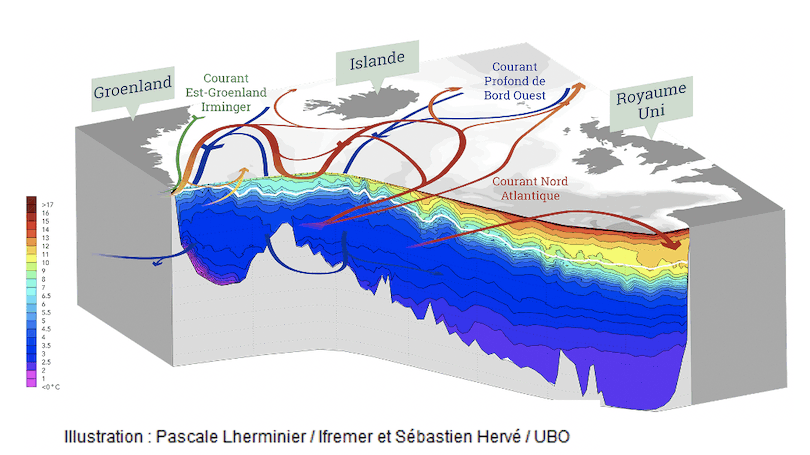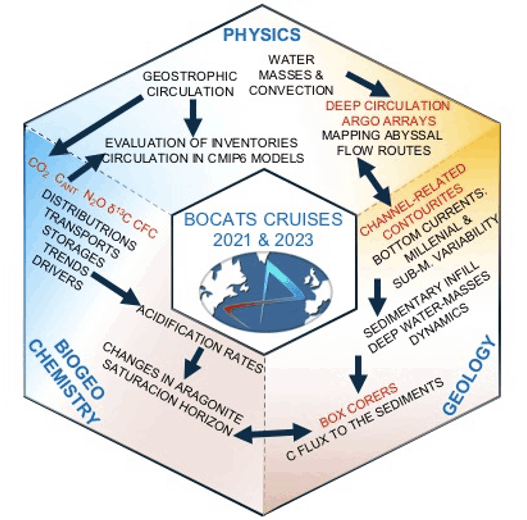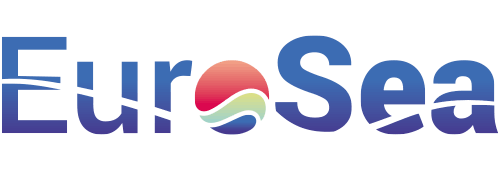ENTRAIN [2025-2028]
ovErflows in the North-atlantic: enTrainment as a shoRtcut for the Anthropogenic sIgnal to the deep-oceaN ?
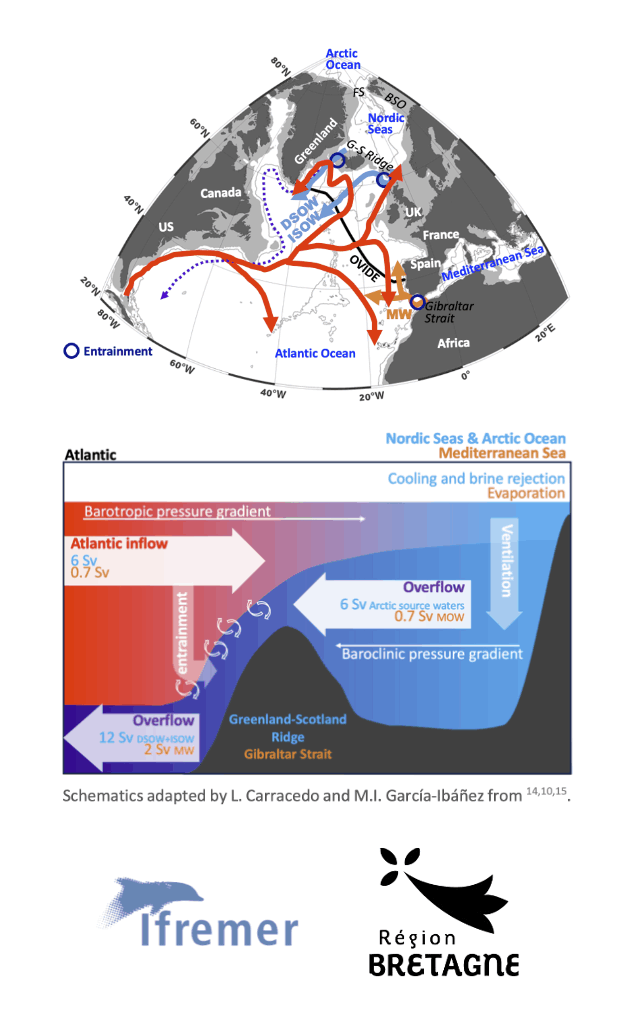
aim
Overview of the ENTRAIN project
The global ocean has uptaken one-quarter of the CO2 emitted to the atmosphere since the 1750’s (anthropogenic CO2, Cant). The North Atlantic (NA) plays a major role as a Cant sink, primarily linked to the Atlantic Meridional Overturning (AMOC) and deep-water mass formation at high latitudes. However, the comprehensive view of mechanisms driving the variability of the Cant storage at depth in this climate-critical region remains largely unresolved. To address this, the ENTRAIN project aims to quantify the surface-to-depth Cant transfer by the three NA overflow water masses that feed the intermediate and deep layers of the Atlantic Ocean: the Denmark Strait Overflow Water (DSOW) and Iceland-Scotland Overflow Water (ISOW), of Arctic origin, and the Mediterranean Water (MW), of Mediterranean origin. During the overflow process across the sills (Greenland-Scotland Ridge and Gibraltar Strait), the dense (Arctic and Mediterranean) overflow source waters experience significant entrainment of relatively Cant-loaded ambient ‘Atlantic’ waters leading to the formation of DSOW, ISOW and MW. This entrainment mechanism, which creates ‘regional overturn cells’, is often (mis)represented in global circulation models. However, it might actually represent a non-negligible pathway for the ‘rapid-transfer’ of the anthropogenic imprint, bypassing the more commonly acknowledged upper-to-lower AMOC limb Cant transport via deep winter convection. ENTRAIN will leverage the extensive in-situ Argo network, supplemented by cruise-based hydrographic observations, to quantify the biogeochemical imprint of entrainment at the three primary overflow sites and create a detailed mapping of the preferred pathways for deep Cant advection in the NA.
PI: Lidia Carracedo
Within the ENTRAIN project, the PhD student under selection will carry out his thesis under the supervision of Virginie Thierry (Ifremer, France), Lidia Carracedo (Ifremer, France) and Maribel García-Ibáñez (IEO-CSIC, Spain).
